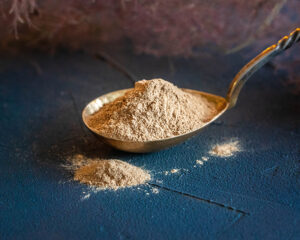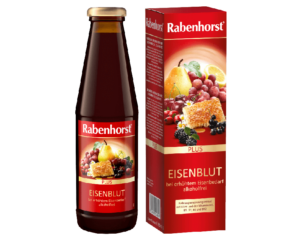Organic liquorice powder
From 4.60€
With its peculiar sweet and salty flavour, liquorice has been known for centuries. Sweet liquorice (liquorice) powder is obtained from the roots of the plant Glycyrrhiza glabra. Liquorice has no not only a unique culinary taste, but also potential health benefits.
Licorice has been used in Ayurveda and Traditional Chinese Medicine (TCM). for the relief of stomach disorders, including indigestion and heartburn, by stimulating the formation of protective mucus in the gastric mucosa. It can
reduce inflammation, it can be used to
treat upper respiratory problems,
can
improve eye health,
neutralise toxins in the body.
The effects of liquorice a powerful antioxidant, increases energy reserves, can improve skin and hair quality. This is confirmed by modern research that licorice active compounds, including glycyrrhizin, have anti-inflammatory properties that may help with inflammatory conditions. Several studies have described the antiviral and antibacterial effects of liquorice root. The phytochemicals in lagrite inhibit bacterial growth. The antibacterial property of liquorice is very important, especially in developing countries where liquorice is used to fight infections. Liquorice is useful for allergies and allergic rhinitis. Licorice’s compounds may have estrogenic effects, which may be useful in managing hormone imbalances and supporting women’s health – phytoestrogens may perform estrogenic functions and help women during menopause or PMS.
Although liquorice has potential benefits, it is important to be aware of the possible side effects. Lprolonged or excessive intake of agrichoke can deplete the body’s potassium stores. Licorice may react with certain medications, including blood pressure, heart disease and diabetes medications. As with any remedy, moderation is key.
Usage: The distinctive flavour of liquorice makes it a versatile ingredient in a wide range of culinary products. It can be used to flavour drinks, sweets and pastries. Because of its soothing properties and natural sweetness, liquorice root is a popular ingredient in herbal teas. Use no more than 3 g per day. Let food be medicine!
Sources: https://www.webmd.com, https://www.healthline.com
NB! The information provided here should not be interpreted as a recommendation for treatment or other types of health problems. We encourage you to make personal health decisions after evaluating different sources of information.
100% organic liquorice root
-
Store in a cool, dark and dry place.










